Beautiful Country Of Malta-Ultimate Guide 2024
The European country of Malta, an archipelago located in the central Mediterranean Sea, boasts a rich and complex history that stretches back thousands of years. A small strategically significant group of islands has been shaped by various civilizations, each leaving its mark on the country of Malta’s culture, religion, society and places to visit.
HISTORY OF MALTA COUNTRY
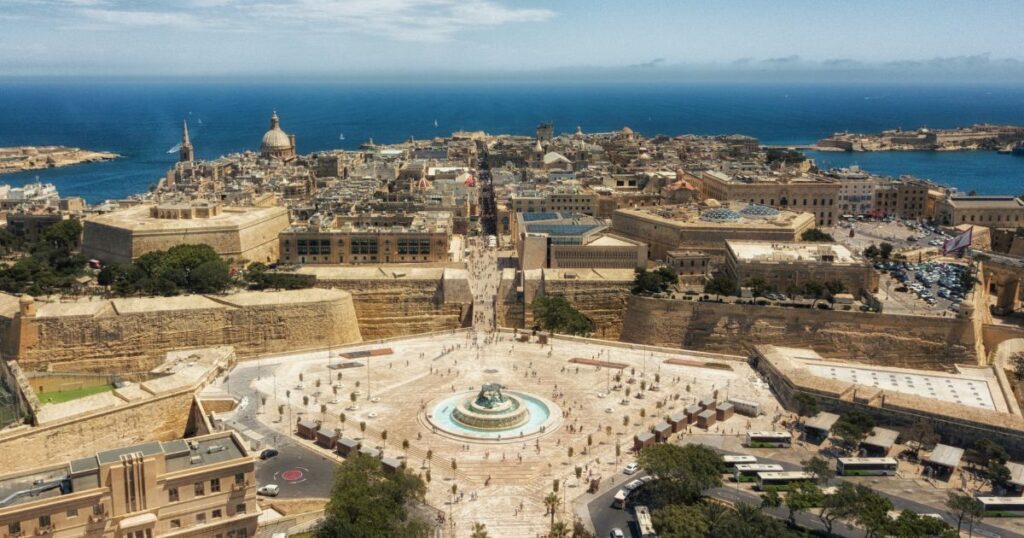
Prehistoric Malta
Malta’s history begins in prehistory, with evidence of human habitation dating back to around 5200 BCE. The earliest settlers were likely Sicilian farmers who brought with them the Neolithic culture. The island is renowned for its prehistoric temples, such as Ħaġar Qim, Mnajdra, and the Ħal Saflieni Hypogeum, They are some of the oldest free-standing structures in the world.
Ancient Times
During the Bronze Age, around 2500 BCE, a new wave of settlers arrived, possibly from Southern Italy. By around 1000 BCE, the Phoenicians, great seafarers from the eastern Mediterranean, colonized the islands, turning Malta into a trading hub.
Classical Period
Malta came under Carthaginian influence around 480 BCE. The strategic importance of the islands grew, and they eventually came under Roman control in 218 BCE during the Second Punic War. Malta flourished under Roman rule, integrating into the Roman world with significant urban development and economic activity.
Early Middle Ages
After the fall of the Western Roman Empire, Malta experienced a series of invasions and changes in control, including periods of Byzantine and Arab rule. The Arab period, beginning in 870 CE, left a lasting impact on Maltese language and culture, introducing new agricultural techniques and crops.
The Norman Conquest and the Middle Ages
In 1091, Count Roger I of Sicily, a Norman, conquered Malta, beginning a period of Norman, and later, Swabian and Aragonese rule. This era saw the gradual Christianization of the islands and the establishment of feudal systems.
The Knights of St. John
A pivotal chapter in Maltese history began in 1530 when Charles V of Spain granted the islands to the Knights Hospitaller (Knights of St. John). The Knights transformed Malta into a formidable military stronghold, most famously defending against the Ottoman Empire during the Great Siege of 1565. Valletta, Malta’s capital, was founded by the Knights and became a cultural and architectural masterpiece.
French and British Rule
The French briefly occupied Malta in 1798 during Napoleon’s campaign, but British forces soon besieged the French, leading to Malta becoming a British protectorate in 1800. This status was formalized in 1814 by the Treaty of Paris, integrating Malta into the British Empire. Malta played a crucial role as a naval base during both World Wars, particularly during World War II when it endured intense Axis bombing.
Independence and Modern Era
Malta gained independence from Britain on September 21, 1964, becoming a republic on December 13, 1974. It joined the European Union on May 1, 2004, and adopted the euro as its currency in 2008.
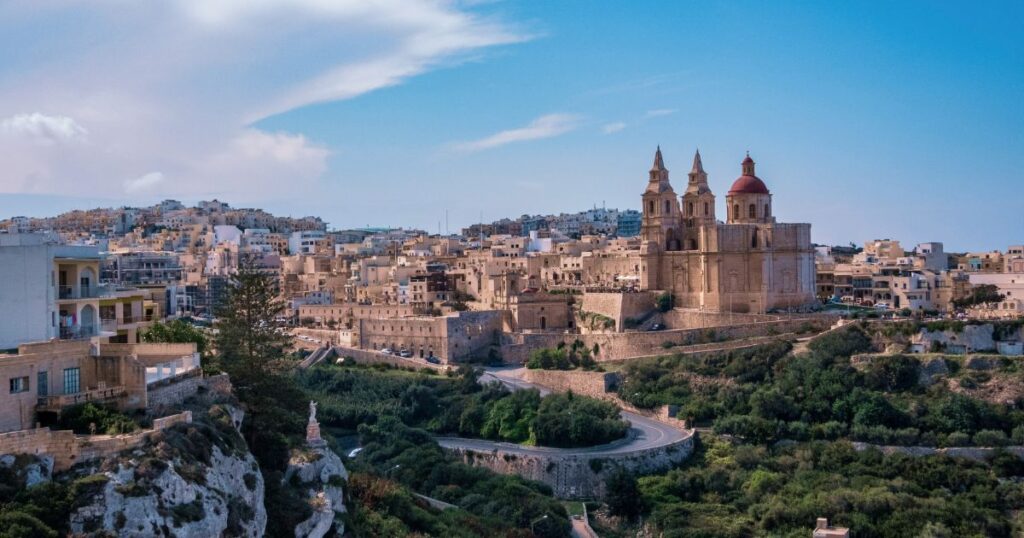
People and Culture
Malta’s population is a melting pot of various Mediterranean cultures. The Maltese people are predominantly Roman Catholic, with the religion playing a significant role in everyday life and festivities. Maltese and English are both official languages, with Italian also widely spoken.
Malta’s people and culture are a fascinating blend of influences that reflect the island’s rich history and strategic location in the Mediterranean. Here’s a detailed look at the kinds of people and cultural aspects that define Malta:
People
Ethnicity and Population: The Maltese population is predominantly made up of ethnic Maltese, with a rich mix of genetic influences from the various civilizations that have settled on or conquered the islands throughout history, including the Phoenicians, Romans, Arabs, Normans, Sicilians, Spanish, and British.
Language: The official languages of Malta are Maltese and English. Maltese (Maltija) is a Semitic language with significant Romance (mainly Sicilian and Italian) and English influences. It is the only Semitic language written in the Latin script and is spoken by nearly all of the population. English is widely spoken and used in official capacities, business, and education. Italian is also widely understood and spoken due to historical and cultural ties.
Religion: Roman Catholicism is the dominant religion in Malta, with over 90% of the population identifying as Catholic. The island is home to numerous churches, and religious festivals (festas) dedicated to various saints are major events in local communities. Malta also has a small but growing number of adherents to other faiths, including Islam, which reflects its diverse and multicultural society.
Culture
Historical Influences: Malta’s culture is a unique amalgamation of the various powers that have ruled the islands. The Knights of St. John, in particular, left a significant legacy in architecture, art, and cultural practices. British colonial influence is also evident in aspects like the legal system, education, and certain social customs.
Architecture: Maltese architecture is notable for its limestone buildings, baroque style, and the extensive use of fortified structures. Valletta, the capital city, is a UNESCO World Heritage site known for its historical buildings, fortifications, and baroque architecture. Traditional Maltese homes often feature colorful wooden balconies known as “gallarija.”
Art and Literature: Malta has a vibrant arts scene, with influences ranging from its Neolithic heritage to contemporary European trends. The island has produced notable artists, writers, and poets who contribute to both local and international cultural landscapes. The Maltese literary tradition includes both works in Maltese and English, with authors exploring themes related to identity, history, and the Mediterranean experience.
Music and Dance: Traditional Maltese music often features instruments like the “għana” (folk guitar) and “tambur” (tambourine). Għana folk singing is a notable aspect of Maltese music, characterized by its improvisational style. Modern Maltese music incorporates a variety of genres, reflecting global influences.
Festivals and Celebrations: Maltese festas are vibrant, community-centered events celebrating the patron saints of various towns and villages. These festivals typically feature processions, band marches, fireworks, and religious ceremonies. Other major cultural events include Carnival, Easter celebrations, and the Malta International Arts Festival.
Cuisine: Maltese cuisine is a flavorful fusion of Mediterranean influences, with a strong emphasis on fresh, local ingredients. Signature dishes include “rabbit stew” (fenek), “pastizzi” (flaky pastries filled with ricotta or peas), “kapunata” (Maltese ratatouille), and “lampuki pie” (fish pie). Traditional bread, “ftira,” and local wines are also integral to Maltese culinary traditions.
Education: Malta places a high value on education, with a well-developed system that includes compulsory education up to the age of 16. The University of Malta, established in 1592, is one of the oldest in the region and a center for higher education and research.
Social Customs: Maltese society is known for its warmth, hospitality, and strong sense of community. Family is a central aspect of life, and social gatherings often revolve around family and religious events.
In summary, Malta’s people and culture are characterized by a rich tapestry of historical influences, a strong Roman Catholic tradition, a unique language, and a vibrant mix of traditional and contemporary cultural expressions. This dynamic blend makes Malta a fascinating place to explore and understand.
Education System In Malta
Malta’s education system is well-structured and comprehensive, reflecting the country’s commitment to high standards of learning and development. Here’s an overview of the education system in Malta, including its structure, institutions, and key features:
Education Structure
- Pre-Primary Education (Early Childhood Education and Care):
- For children aged 3 to 5 years.
- Offered by both public and private institutions.
- Focuses on basic cognitive, social, and motor skills development.
- Primary Education:
- For children aged 5 to 11 years.
- Comprises six years of compulsory education.
- Core subjects include Maltese, English, Mathematics, Science, Religion, Social Studies, Physical Education, and Art.
- Secondary Education:
- For students aged 11 to 16 years.
- Consists of two cycles: the Junior Lyceum (first three years) and the Senior Lyceum (final two years).
- Ends with the Secondary Education Certificate (SEC) examinations, similar to the British GCSEs.
- Offers a broad curriculum with compulsory subjects and optional courses tailored to students’ interests and career aspirations.
- Post-Secondary Education:
- Typically for students aged 16 to 18 years.
- Includes institutions such as Junior Colleges and Sixth Forms.
- Prepares students for higher education with courses leading to the Matriculation Certificate (MATSEC) examinations, akin to A-Levels.
- Tertiary Education:
- Primarily provided by the University of Malta, established in 1592, offering undergraduate, postgraduate, and doctoral programs across various disciplines.
- Malta College of Arts, Science, and Technology (MCAST) offers vocational education and training programs.
- Institutes for Tourism Studies (ITS) and other specialized institutions provide industry-specific training.
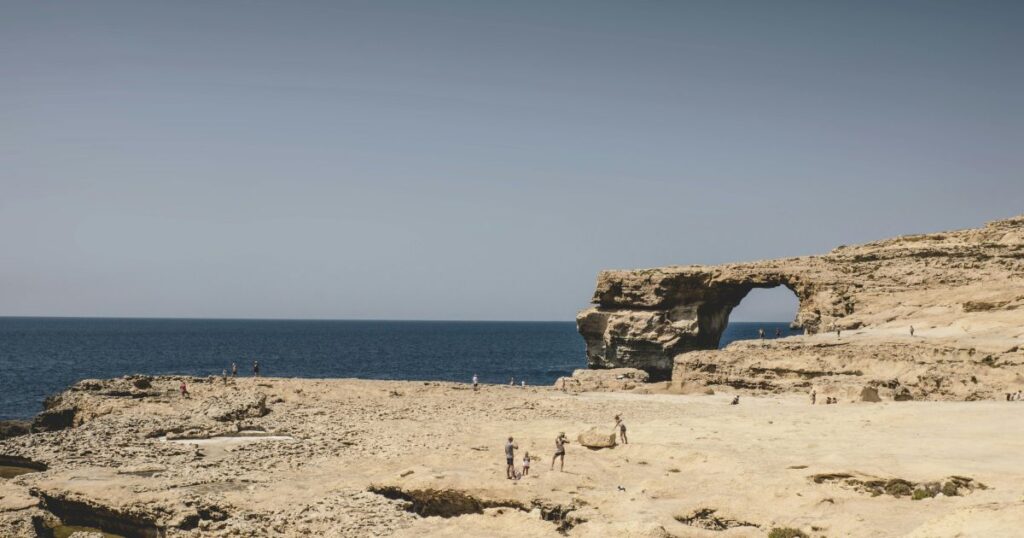
Key Features
Public and Private Schools:
- Malta has a mix of public (state) schools, private (independent) schools, and church schools.
- Education is free in state schools, including free provision of textbooks and transportation.
- Church schools, which are heavily subsidized by the government, and private schools charge fees.
Language of Instruction:
- Maltese and English are the primary languages of instruction.
- Bilingual education ensures students are proficient in both languages.
Curriculum:
- The national curriculum is designed to be holistic, promoting intellectual, personal, and social development.
- Includes a wide range of subjects with an emphasis on STEM (Science, Technology, Engineering, and Mathematics), languages, and the arts.
Inclusive Education:
- Malta promotes inclusive education policies ensuring that children with special needs have access to mainstream education.
- Special support services and resource centers are available for students with disabilities.
Further and Adult Education:
- Adult education and lifelong learning are strongly supported, with various programs and evening classes available for adults wishing to further their education or acquire new skills.
Internationalization:
- Malta’s education system is increasingly international, attracting students from around the world due to its high standards and use of English.
- The University of Malta and other institutions have numerous partnerships with foreign universities, facilitating exchange programs and joint degrees.
Recent Developments
- Digital Education: There is a growing emphasis on integrating digital technologies into the classroom, with initiatives to enhance ICT skills among students and teachers.
- Reforms: Ongoing reforms aim to modernize the curriculum, improve vocational training, and align education more closely with labor market needs.
- Quality Assurance: Malta’s National Commission for Further and Higher Education (NCFHE) oversees quality assurance and accreditation of educational institutions and programs, ensuring high standards are maintained.
Malta’s education system is robust, inclusive, and dynamic, providing students with a strong foundation for personal and professional development. The blend of traditional and modern educational practices, along with a focus on bilingualism and international standards, makes Malta an attractive family-friendly destination for students and educators alike.
Religion In Malta
Religion in Malta plays a significant role in the cultural, social, and daily life of its people. The country’s religious landscape is predominantlily Roman Catholic, but it also accommodates a variety of other faiths.
Predominant Religion
Roman Catholicism:
- Historical Influence: Roman Catholicism has been deeply ingrained in Maltese culture since the early history of the islands. According to tradition, Christianity was brought to Malta by Saint Paul in 60 AD when he was shipwrecked on the islands.
- Majority Faith: Approximately 90% of the Maltese population identifies as Roman Catholic.
- Church Attendance: Malta has one of the highest rates of church attendance in Europe, with many Maltese people attending Mass regularly.
- Religious Institutions: The island is dotted with churches, chapels, and cathedrals. Each town and village typically has its own parish church, often dedicated to a patron saint. Notable churches include St. John’s Co-Cathedral in Valletta and the Sanctuary of Our Lady of Mellieħa.
Religious Festivals and Traditions
- Festas: Religious festivals, known as festas, are central to Maltese culture. These celebrations honor the patron saints of various towns and villages and include processions, fireworks, music, and feasts.
- Holy Week: Easter is a significant event in Malta, marked by solemn processions and re-enactments of the Passion of Christ.
- Christmas: Christmas is celebrated with great enthusiasm, featuring nativity scenes, midnight Mass, and community events.
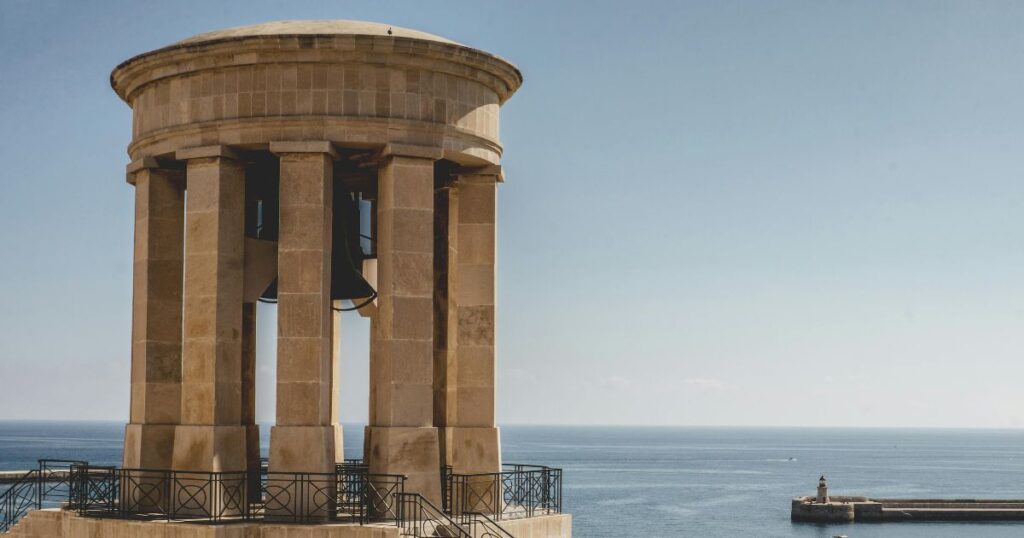
Islam:
- There is a small but growing Muslim community in Malta, primarily composed of immigrants and expatriates. The Maryam al-Batool Mosque in Paola is the primary place of worship for Muslims on the island.
Orthodox Christianity:
- The Greek Orthodox Church and the Russian Orthodox Church have small communities in Malta, with churches in Valletta and other locations.
Protestantism:
- Various Protestant denominations, including the Church of England, have a presence in Malta. The Anglican Pro-Cathedral of St. Paul in Valletta serves the Anglican community.
Judaism:
- Malta has a small Jewish community with a synagogue located in Ta’ Xbiex. The Jewish presence in Malta dates back to ancient times, although the community is now relatively small.
Hinduism and Buddhism:
- There are also small communities of Hindus and Buddhists, primarily composed of expatriates and immigrants. These communities practice their faith in private or in informal gatherings.
Secularism and Religious Freedom
- Constitutional Provisions: The Constitution of Malta establishes Roman Catholicism as the state religion but also guarantees freedom of worship and the right to practice other religions.
- Secular Trends: While Malta remains predominantly religious, there has been a gradual increase in secularism, particularly among younger generations. However, religious institutions and traditions still play a significant role in public and private life.
Education and Religion
- Religious Education: Catholic religious instruction is part of the curriculum in state and church schools, reflecting the dominant faith. However, parents can opt their children out of these classes.
- Church Schools: Many schools in Malta are run by the Catholic Church, providing education from a religious perspective while adhering to national education standards.
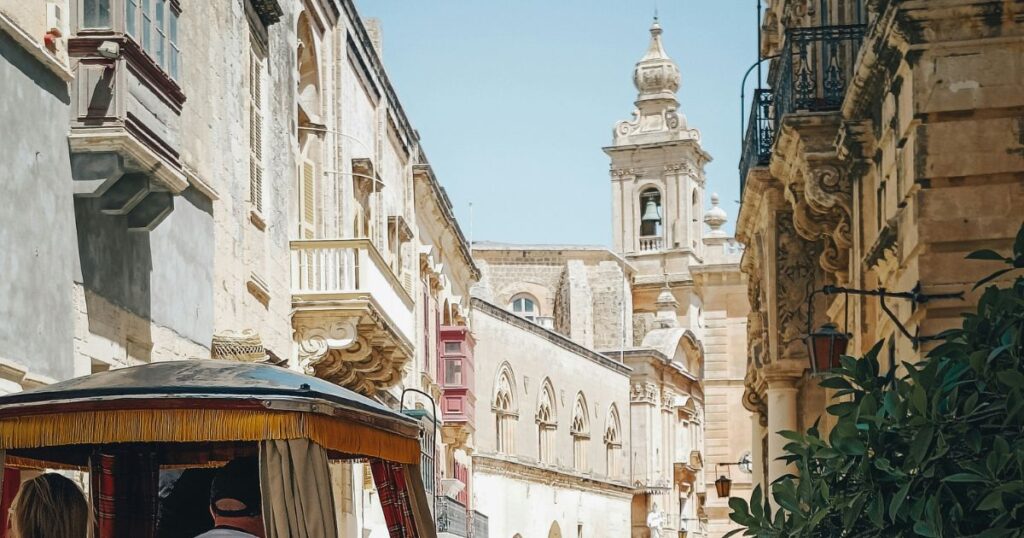
Religion in Malta is a cornerstone of its cultural and social identity, with Roman Catholicism playing a central role. The island’s religious landscape, however, is diverse and inclusive, accommodating various faiths and traditions. This rich religious heritage is reflected in Malta’s vibrant festivals, architectural landmarks, and daily life.
Exploring the Beauty Country of Malta: Must-Visit
Family-friendly Destinations
Malta, a gem in the heart of the Mediterranean, offers a stunning array of beautiful places to visit. Its rich history, vibrant culture, and breathtaking landscapes make it a perfect family-friendly destination for travellers seeking both adventure and relaxation. Here are some of the most beautiful places to explore in Malta.
1. Valletta
Historical Charm and Architectural Splendor
Valletta, Malta’s capital, is a UNESCO World Heritage site renowned for its baroque architecture, historical landmarks, and vibrant cultural scene. Stroll through the narrow streets to discover stunning sites like St. John’s Co-Cathedral, with its opulent interior and Caravaggio masterpieces. The Upper Barrakka Gardens offer panoramic views of the Grand Harbour, making it a perfect spot for photos and relaxation.

2. Mdina
The Silent City
Mdina, also known as the Silent City, is a fortified medieval town that served as Malta’s capital until the medieval period. This walled city exudes old-world charm with its narrow, winding streets, palaces, and churches. Don’t miss the Mdina Cathedral and the Mdina Dungeons for a glimpse into the city’s storied past. At night, the city is beautifully illuminated, creating a magical atmosphere.
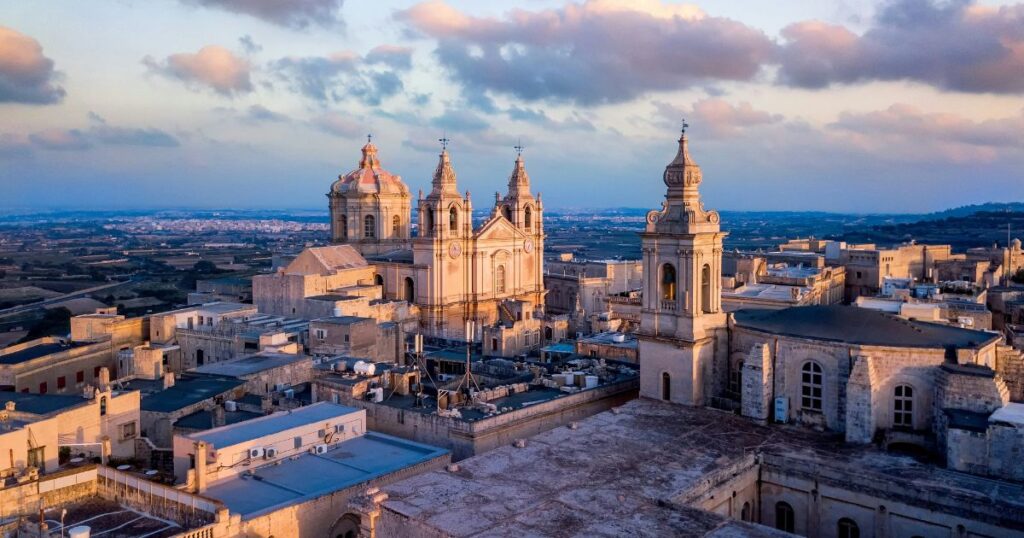
3. Blue Lagoon, Comino
Turquoise Waters and Secluded Beaches
The Blue Lagoon on the island of Comino is one of Malta’s most famous natural attractions. Known for its crystal-clear turquoise waters and white sandy is the best beaches in the world, it’s an ideal spot for swimming, snorkeling, and sunbathing. The surrounding cliffs and caves add to the picturesque scenery, making it a paradise for nature lovers and photographers.
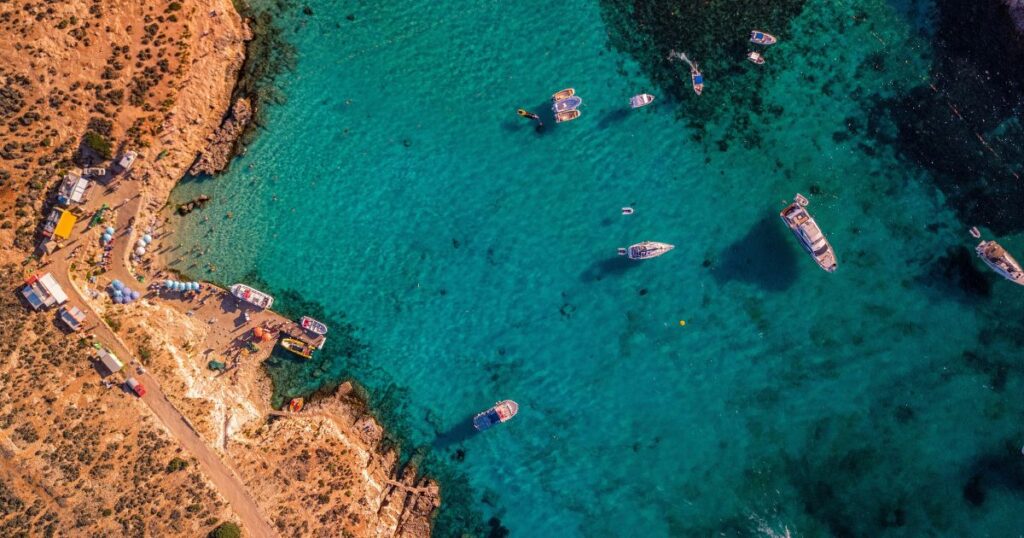
4. Gozo Island
Rugged Landscapes and Rich History
Gozo, Malta’s sister island, offers a more rural and tranquil experience. It boasts rugged landscapes, the best beaches in the world, and historical sites. The Citadel in Victoria, Gozo’s capital, provides stunning views of the island. The Azure Window, although collapsed, remains a symbol of Gozo’s natural beauty. Other attractions include the Ggantija Temples, one of the world’s oldest freestanding structures, and the picturesque Xlendi Bay.
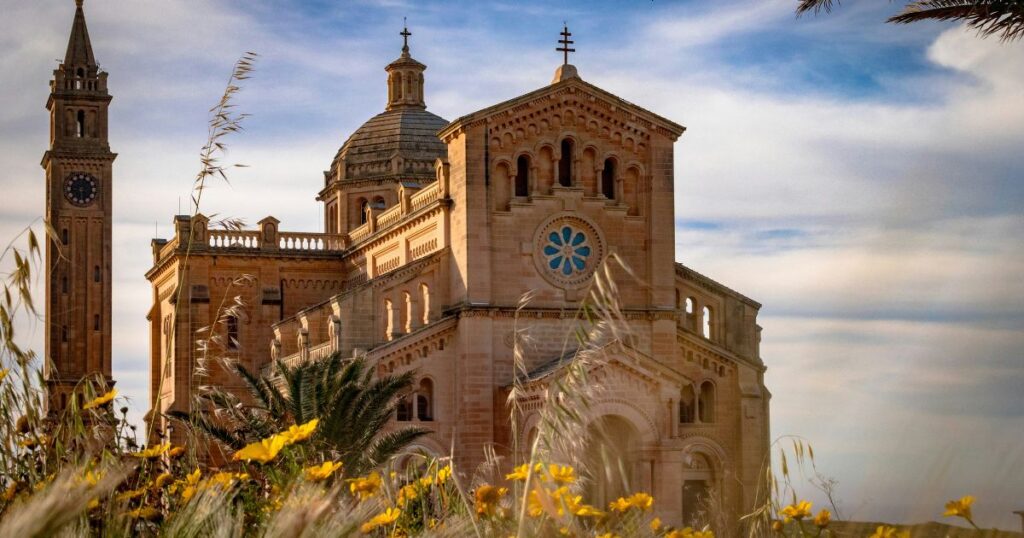
5. Marsaxlokk
Traditional Fishing Village
Marsaxlokk is a charming fishing village famous for its colourful “luzzu” boats and bustling Sunday fish market. The waterfront is lined with restaurants serving fresh seafood, making it a great spot for a leisurely meal. The village’s serene atmosphere and picturesque harbor make it a favorite among visitors seeking a taste of traditional Maltese life.
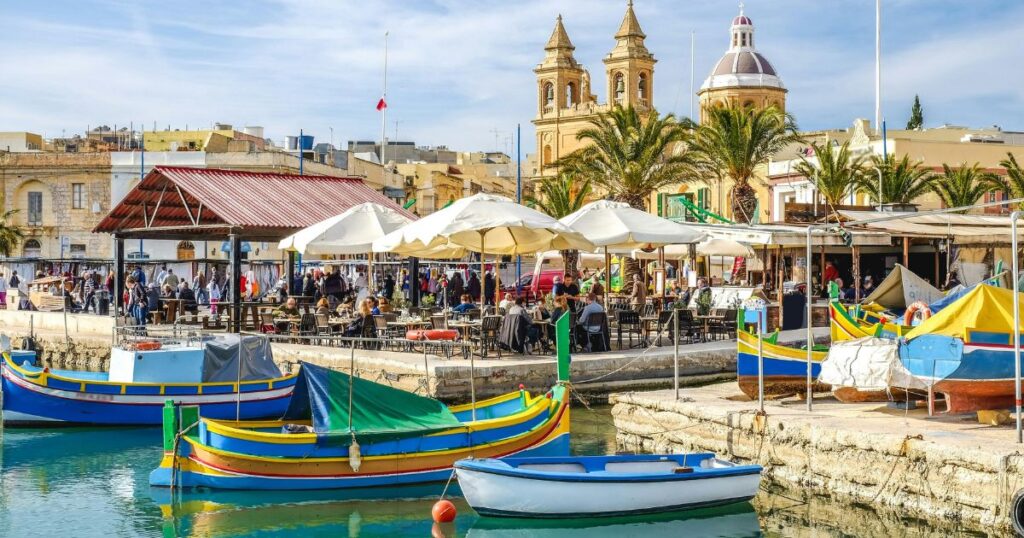
6. Ħaġar Qim and Mnajdra Temples
Ancient Megalithic Temples
The Ħaġar Qim and Mnajdra Temples are some of Malta’s most significant archaeological sites. Dating back to around 3600-3200 BCE, these prehistoric temples offer a fascinating glimpse into Malta’s ancient history. The temples are located on a hilltop overlooking the sea, providing both historical intrigue and scenic beauty.
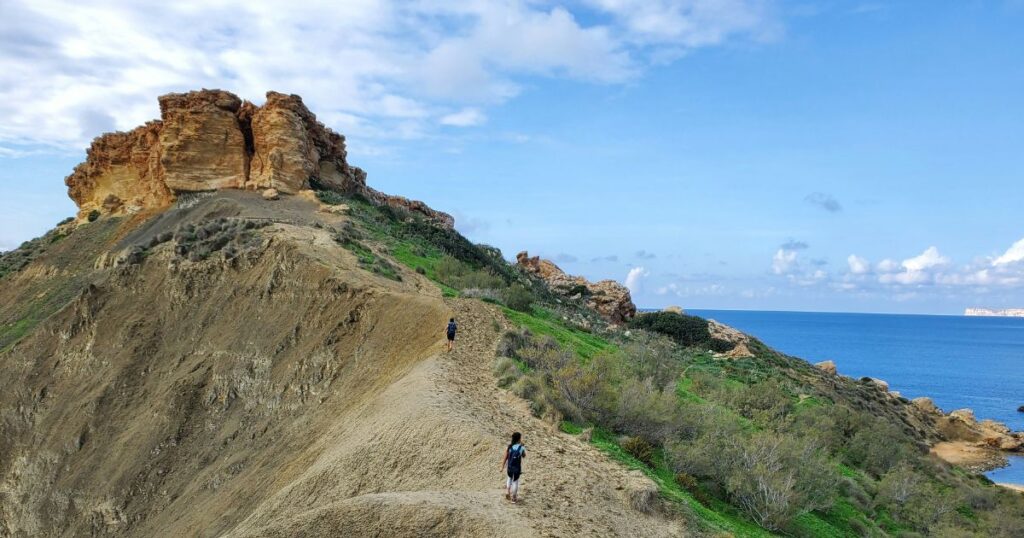
7. Dingli Cliffs
Dramatic Coastal Views
The Dingli Cliffs, located on the western coast of Malta, offer some of the most dramatic views on the island. Rising to around 250 meters above sea level, these cliffs provide stunning vistas of the Mediterranean Sea and the Maltese countryside. It’s a great spot for hiking, photography, and enjoying breathtaking sunsets.
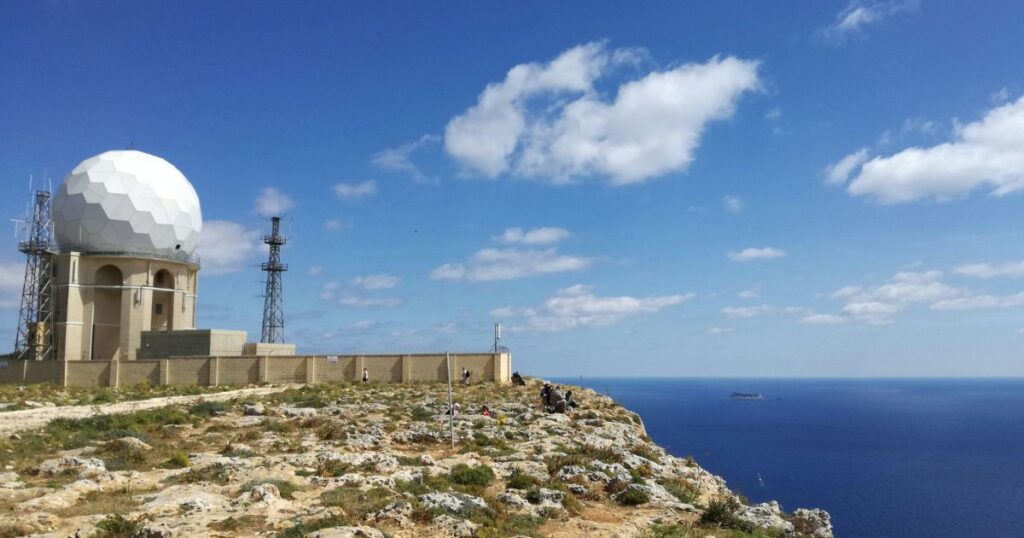
8. The Three Cities
Historical Fortifications and Maritime Heritage
Vittoriosa (Birgu), Senglea (L-Isla), and Cospicua (Bormla) make up the Three Cities, an area rich in history and maritime heritage. Explore the narrow streets, historical fortifications, and beautiful churches. The Inquisitor’s Palace in Vittoriosa and the Gardjola Gardens in Senglea are must-visit sites. The waterfront, lined with restaurants and cafes, offers a relaxing ambience with stunning views of the Grand Harbour.
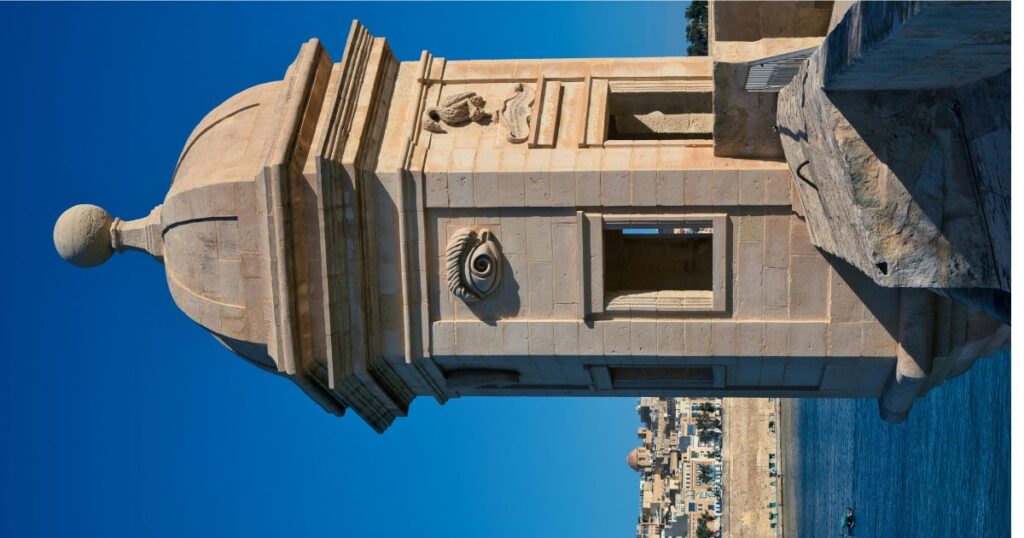
9. St. Peter’s Pool
Natural Swimming Pool
St. Peter’s Pool is a natural swimming pool located near Marsaxlokk. Its clear, blue waters and flat rocks make it a perfect spot for swimming, sunbathing, and cliff diving. The surrounding area offers beautiful views of the coastline, making it a favorite among locals and tourists alike.
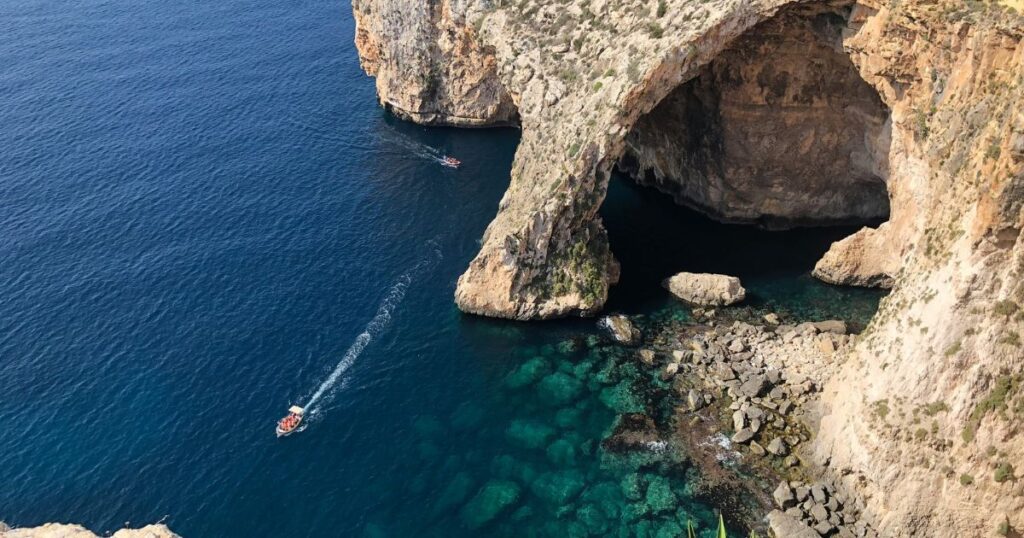
10. Mosta Dome
Architectural Marvel
The Rotunda of Mosta, commonly known as the Mosta Dome, is one of Malta’s most impressive churches. Famous for its massive unsupported dome, one of the largest in the world, the church also has a miraculous story from World War II, when a bomb pierced the dome during Mass but failed to explode. The church’s interior is equally stunning, with intricate decorations and a serene atmosphere.
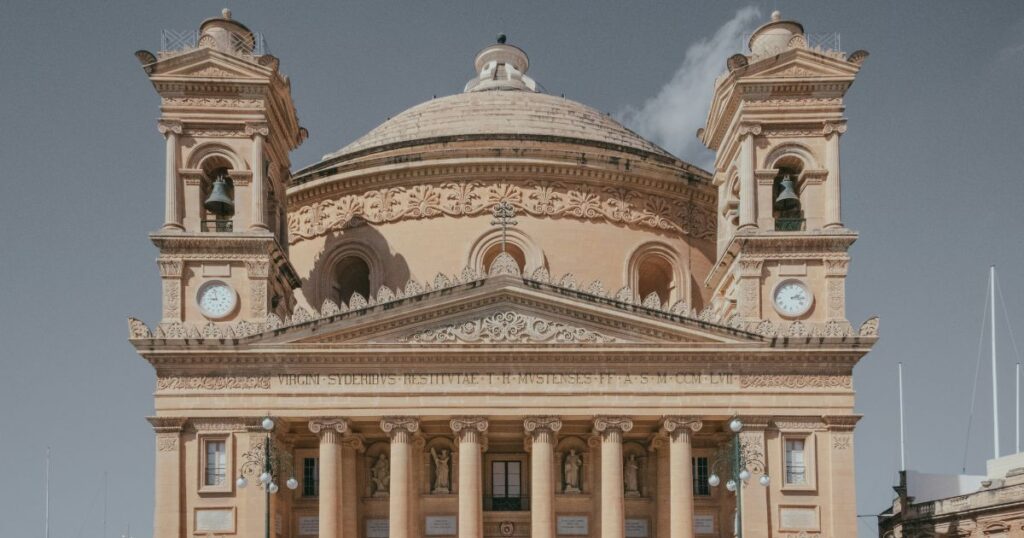
Malta’s blend of historical landmarks, natural beauty, and vibrant culture makes it a captivating destination for travelers. Whether you’re exploring ancient temples, relaxing on pristine beaches, or wandering through medieval streets, Malta offers a wealth of experiences that will leave you enchanted and eager to return.
Visiting Malta
Malta offers a rich and diverse experience, combining historical sites, stunning natural landscapes, vibrant culture, and delicious cuisine. To make the most of your trip, here are some valuable tips and advice for tourists:
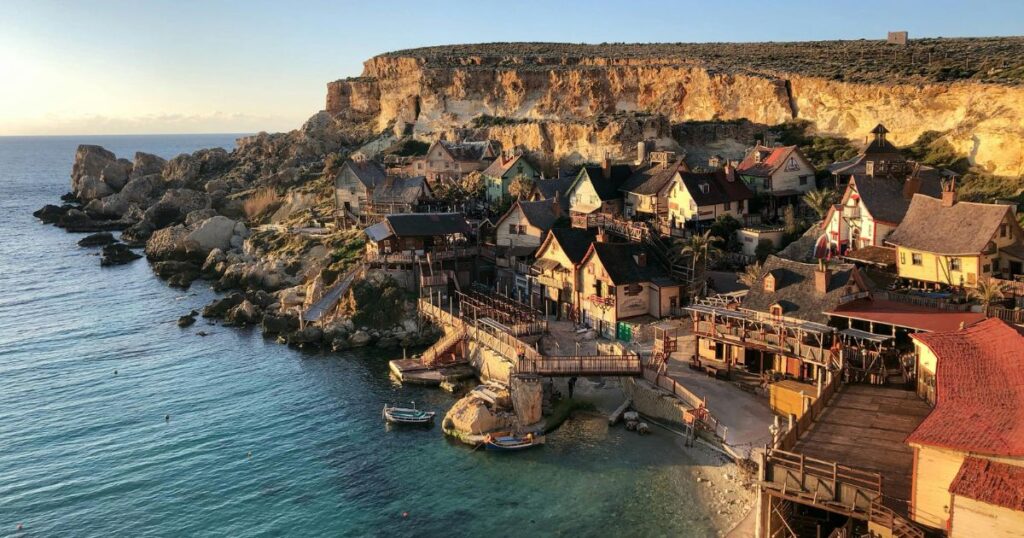
1. Best Time to Visit
- Spring (April to June): This is an excellent time to visit as the weather is warm but not too hot, and the island is in full bloom.
- Autumn (September to November): Another great period with pleasant temperatures and fewer tourists compared to the summer.
- Summer (July and August): Expect hot weather and crowded tourist spots. Ideal for outdoor activities but bring plenty of sun protection.
2. Accommodation
- Book in Advance: Malta is a popular tourist family-friendly destination, especially in peak seasons. Book your accommodation early to secure the best options.
- Consider Location: Choose your base depending on your interests. Valletta is great for history and culture, Sliema and St. Julian’s for nightlife and dining, and Gozo for a quieter, more rural experience.
3. Transportation
- Public Transport: Malta has an extensive bus network that is affordable and covers most tourist family-friendly destinations. However, buses can be crowded in peak seasons.
- Car Rental: Renting a car offers more flexibility, especially if you plan to explore Gozo or remote areas. Remember, Malta drives on the left side of the road.
- Ferries: Regular ferries connect Malta with Gozo and Comino. The ferry ride to Gozo offers beautiful views and is a pleasant experience in itself.
4. Exploring Valletta and Other Cities
- Walking Tours: Valletta is best explored on foot. Join a guided tour to learn about the city’s rich history and hidden gems.
- Three Cities: Take a boat or a ferry across the Grand Harbour to visit Vittoriosa, Senglea, and Cospicua, known as the Three Cities, which offer a glimpse into Malta’s maritime history.
5. Cultural Etiquette
- Respect Religious Customs: Malta is a predominantly Roman Catholic country. Dress modestly when visiting churches and religious sites.
- Language: While Maltese is the national language, English is widely spoken. Learning a few basic Maltese phrases can be appreciated by locals.
6. Must-See Attractions
- Historical Sites: Don’t miss the ancient temples of Ħaġar Qim and Mnajdra, the walled city of Mdina, and the grand St. John’s Co-Cathedral in Valletta.
- Natural Wonders: Visit the Blue Lagoon on Comino, the Dingli Cliffs for spectacular views, and St. Peter’s Pool for a unique swimming experience.
- Museums and Galleries: The National Museum of Archaeology in Valletta and the Gozo Museum of Archaeology offer fascinating insights into Malta’s history.
7. Local Cuisine
- Try Traditional Dishes: Sample Maltese specialties such as pastizzi (flaky pastries filled with ricotta or peas), rabbit stew (fenek), and ftira (Maltese bread).
- Seafood: Being an island nation, Malta offers fresh and delicious seafood. Marsaxlokk is particularly known for its fish restaurants.
8. Outdoor Activities and Experiences
- Diving and Snorkeling: Malta is a top destination for diving, with numerous sites including shipwrecks, caves, and reefs.
- Festivals: Experience local culture by attending one of Malta’s many festas, which are lively religious festivals featuring processions, fireworks, and music.
- Boat Trips: Take a boat tour to explore the coastline, sea caves, and smaller islands like Comino.
9. Health and Safety
- Stay Hydrated: The Mediterranean sun can be intense, especially in summer. Carry water with you and use sunscreen.
- Safe Swimming: Stick to designated swimming areas, especially when exploring rocky beaches or natural pools.
10. Practical Tips
- Currency: Malta uses the Euro (€). ATMs are widely available, and credit cards are accepted in most places.
- Electricity: Malta uses the British-style three-pin plug (Type G). Carry an adapter if needed.
- Emergency Numbers: Dial 112 for emergencies. Hospitals and clinics are well-equipped to handle health issues.
By keeping these tips in mind, you’ll be well-prepared to enjoy all that Malta has to offer, from its historical wonders and vibrant culture to its stunning natural beauty. Enjoy your trip!
http://pairstravel.com/exploring-19-of-the-best-places-to-visit-in-europe
http://pairstravel.com/most-beautiful-places-in-the-world-to-visit
http://pairstravel.com/10-best-beaches-world
Aiman Khalid
I’m Aiman Khalid, your dedicated SEO Analyst. With a passion for digital marketing and a keen eye for optimizing online experiences, I’ve made it my mission to help businesses thrive in the digital realm. My journey into the world of SEO began with a fascination for search engines and their algorithms, and since then, I’ve honed my skills to become a seasoned professional. Armed with years of experience, I specialize in crafting SEO strategies that not only boost search engine rankings but also drive tangible results, such as increased website traffic and conversions. I’m here to demystify the world of SEO and empower your online presence, one keyword at a time.
-
© Copyright 2020 | www.pairstravel.com
